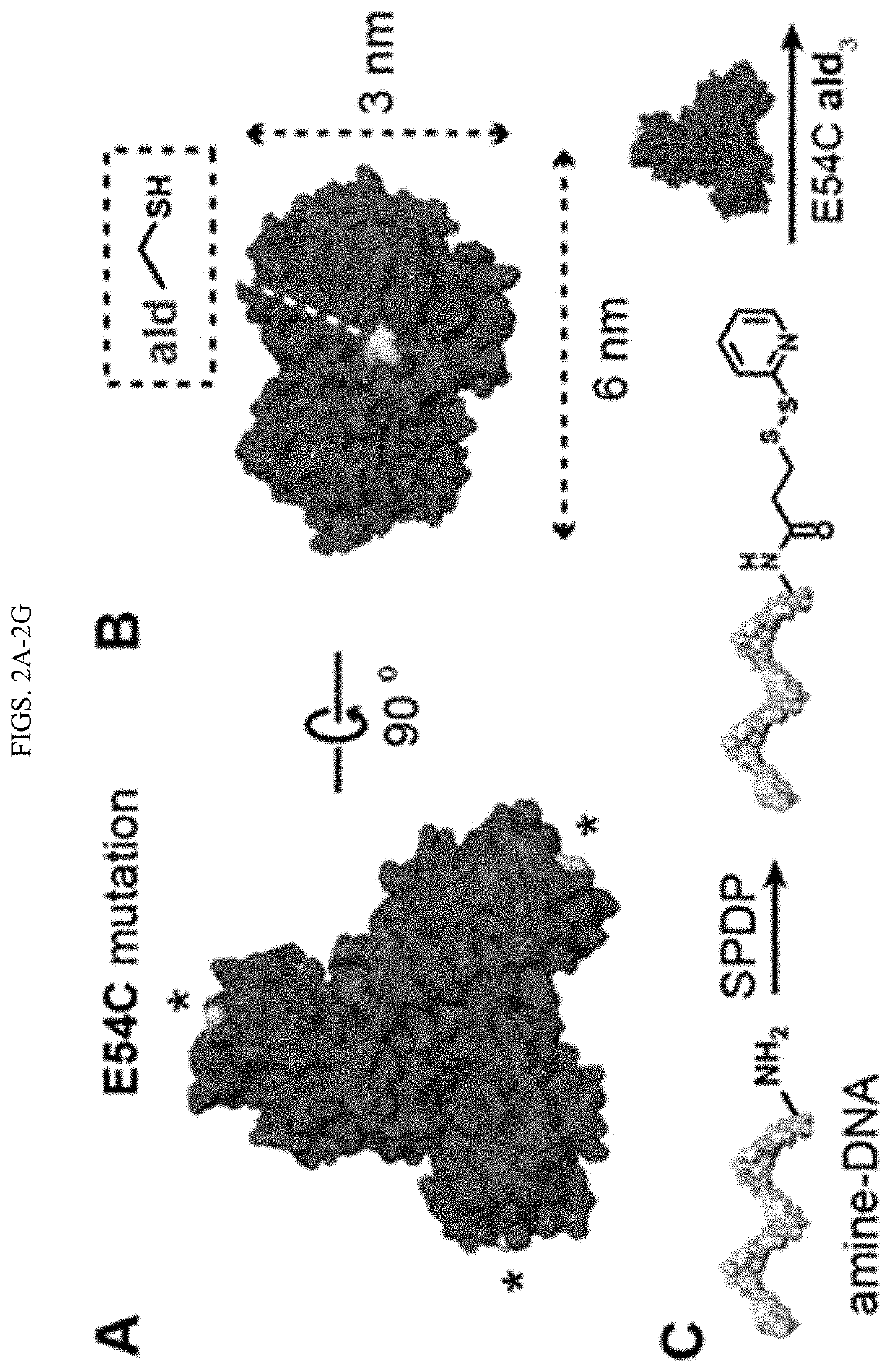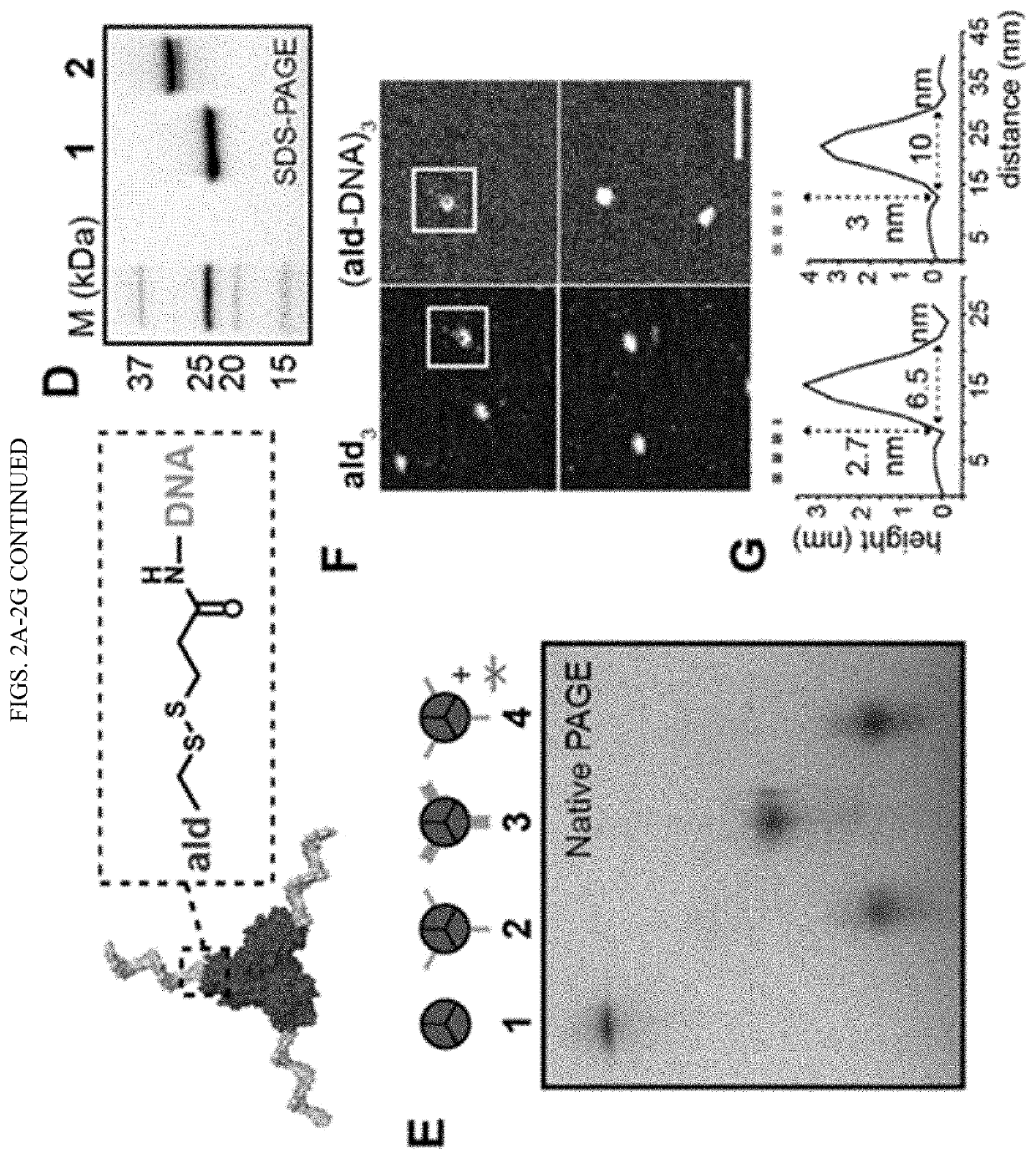Tunable nanoscale cages from self-assembling DNA and protein building blocks
a technology of dna and protein, which is applied in the direction of lyase, enzyme stabilisation, peptides, etc., can solve the problems of requiring technical expertise in protein design that is challenging for the non-expert, and is difficult to build highly anisotropic or asymmetrically modified structures
- Summary
- Abstract
- Description
- Claims
- Application Information
AI Technical Summary
Benefits of technology
Problems solved by technology
Method used
Image
Examples
example 1
[0064]The embodiment described here demonstrates a protein-DNA nanocage constructed through chemical conjugation of oligonucleotide handles on a protein building block. In particular, this example demonstrates the design and assembly of a tetrahedral nanocage structure including a homotrimeric protein covalently linked to a polynucleotide handle and a triangular DNA base including 4 nucleotide strands, where the polynucleotide handles linked to the protein are complementary to and hybridize with three of the strands of the triangular DNA base.
Methods
[0065]Protein Expression—
[0066]The gene for KDPG aldolase was inserted into the pet28b+ plasmid using standard molecular cloning techniques, and then used to transform E. coli BL21(DE3) competent cells (New England Biolab Inc. USA) for protein expression. Protein sequences are provided in Table 1 and a summary of plasmids used is provided in Table 2. All expression constructs described herein were verified by DNA sequencing subsequent to...
PUM
 Login to View More
Login to View More Abstract
Description
Claims
Application Information
 Login to View More
Login to View More - R&D
- Intellectual Property
- Life Sciences
- Materials
- Tech Scout
- Unparalleled Data Quality
- Higher Quality Content
- 60% Fewer Hallucinations
Browse by: Latest US Patents, China's latest patents, Technical Efficacy Thesaurus, Application Domain, Technology Topic, Popular Technical Reports.
© 2025 PatSnap. All rights reserved.Legal|Privacy policy|Modern Slavery Act Transparency Statement|Sitemap|About US| Contact US: help@patsnap.com



